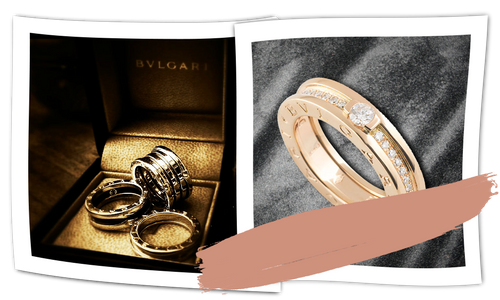INSPIRATION
The History Of Bvlgari


The History of Bvlgari

The Early Years
Sotirio Voulgaris was born in northern Greece in a tiny village in the Pindus Mountains. The area was renowned for its silversmithing and the craft spanned generations. Voulgaris embraced the art and followed a long line of family silversmiths. He had an eye for detail and exceptional design skills which took him on a voyage to produce beautiful jewellery.
In 1877, he moved to Corfu, but the rapidly growing city of Rome caught his eye, and in 1881, he moved to Rome and opened his first store. The business grew at pace, and Voulgaris, enthralled by the Italian way of life, changed his name to Bulgari, which was the phonetic version of his Greek family name. Bulgari became the brand name, and he opened his flagship store in 1904. The store was situated on an elite street near the Spanish Steps, and it quickly established a reputation for exquisitely crafted Greek jewellery that had an Italian twist.


The Bvlgari Second Generation
In 1932, his two sons, Constantino and Giorgio, inherited the business. The sons redesigned the store and set up a sophisticated, luxurious interior akin to the reputation that the brand had developed. They introduced pink and beige Italian marble which became the hallmark of Bvlgari. The brand logo was also tweaked from Bulgari to Bvlgari which used the Roman alphabet, and U changed to V.
During World War II, Bvlgari removed the precious stones from the jewellery designs, as wartime restrictions made them difficult to obtain. Instead, the brand concentrated on making exquisite, sculptural pieces in yellow gold. Once the war was over, and life became more prosperous, Bvlgari set to work designing magnificent jewellery encrusted with precious stones once more, including diamonds, emeralds, sapphires, and rubies. The stunning designs soon attracted wealthy celebrities, nobility, and socialites who had the money to spend on these beautiful and luxurious pieces.

1960 was a milestone year for Bvlgari because the brand made a transition in the designs. It moved away from following fashion and became the trendsetter instead. Bold, colourful gemstones were used and they were deliberately unfaceted. The resulting Bvlgari jewellery looked cutting edge and simply stunning.

Building The Brand
During the 1970s, the Bvlgari brand ventured further afield and expanded internationally. Stores were opened in New York, Geneva, and Paris. Bvlgari also started designing watches, and the trademark tubogas snake bracelet made its first appearance. The business built a strong celebrity following which included stars like Sophia Loren, Audrey Hepburn and Elizabeth Taylor. However, despite the glamorous star fan base, in the 1980s, Bvlgari started to see a slump in business, so an aggressive marketing campaign was launched to attract a wider audience. Several new international retail stores were opened, and the Bvlgari product portfolio diversified. The brand moved from exclusive, special occasion jewellery to everyday wear.
In the following years, Bvlgari expanded its portfolio further and moved into leather goods, perfume, neckties, scarves and much more. In 2001, Bvlgari also formed a joint venture with the Luxury Group hotelier and went on to open the Bvlgari Hotels & Resorts. The first Bvlgari hotel opened in Rome in 2004 and the brand now owns 6 international hotels.


Famous Signature Bvlgari
The Bvlgari Trombino Ring
The Trombino (little trumpet) ring is one of the most successful designs Bvlgari has ever produced. It made its first appearance in the early 1930s and was an instant success because the design allowed the gemstone to stand proud. The Trombino ring featured pav

